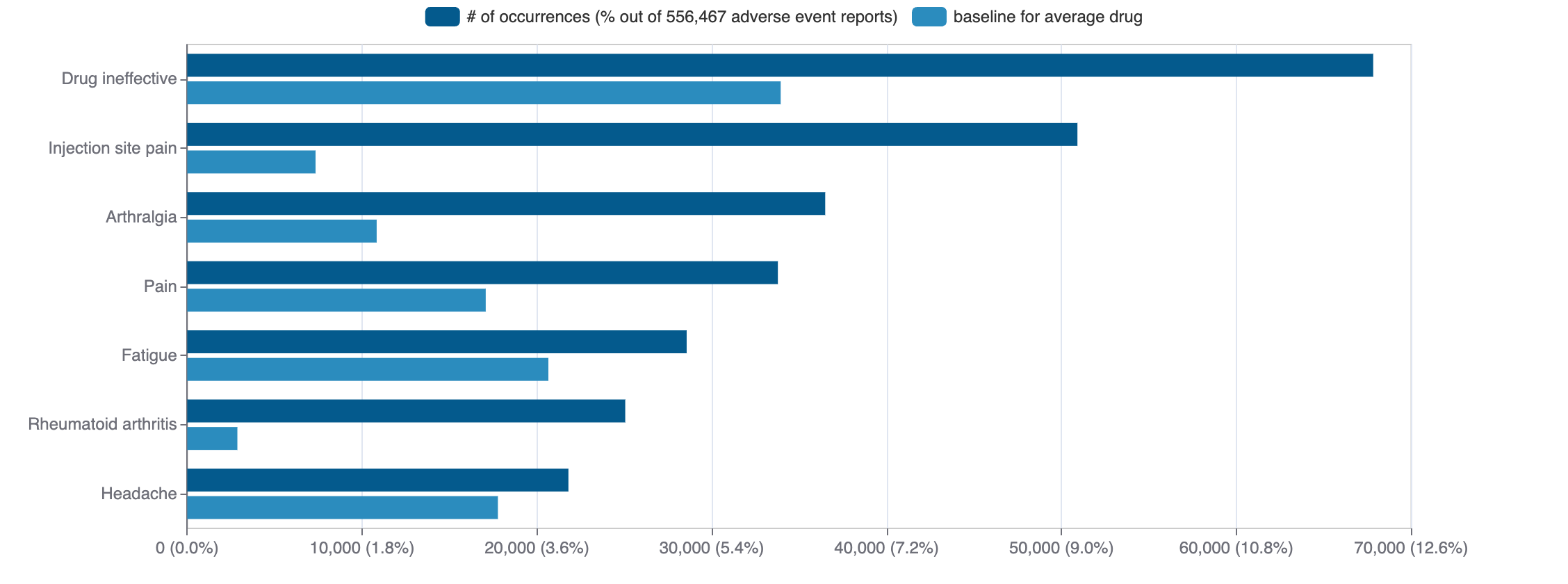Buspirone
Buspar (buspirone) is a small molecule pharmaceutical. Buspirone was first approved as Buspar on 1986-09-29. It is used to treat anxiety disorders, depressive disorder, and intellectual disability in the USA. The pharmaceutical is active against 5-hydroxytryptamine receptor 1A. In addition, it is known to target 5-hydroxytryptamine receptor 7.
Download report
Favorite
Commercial
Trade Name
FDA
EMA
No data
Drug Products
FDA
EMA
New Drug Application (NDA)
New Drug Application (NDA)
Abbreviated New Drug Application (ANDA)
Abbreviated New Drug Application (ANDA)
Labels
FDA
EMA
Brand Name | Status | Last Update |
|---|---|---|
| buspar | ANDA | 2016-05-25 |
| buspirone hydrochloride | ANDA | 2023-06-07 |
Indications
FDA
EMA
Indication | Ontology | MeSH | ICD-10 |
|---|---|---|---|
| anxiety disorders | EFO_0006788 | D001008 | F41.1 |
| depressive disorder | EFO_1002014 | D003866 | F32.A |
| intellectual disability | HP_0001249 | D008607 | F73 |
Agency Specific
FDA
EMA
No data
Patent Expiration
No data
HCPCS
No data
Clinical
Indications Phases 4
No data
Indications Phases 3
No data
Indications Phases 2
No data
Indications Phases 1
No data
Indications Without Phase
No data
Epidemiology
Epidemiological information for investigational and approved indications
View more details
Drug
General
| Drug common name | BUSPIRONE |
| INN | buspirone |
| Description | Buspirone is an azaspiro compound that is 8-azaspiro[4.5]decane-7,9-dione substituted at the nitrogen atom by a 4-(piperazin-1-yl)butyl group which in turn is substituted by a pyrimidin-2-yl group at the N(4) position. It has a role as an anxiolytic drug, a sedative, a serotonergic agonist and an EC 3.4.21.26 (prolyl oligopeptidase) inhibitor. It is an azaspiro compound, a member of pyrimidines, a N-arylpiperazine, a N-alkylpiperazine, a member of piperidones and an organic heteropolycyclic compound. It is a conjugate base of a buspirone(1+). |
| Classification | Small molecule |
| Drug class | anxiolytics (buspirone type) |
| Image (chem structure or protein) | |
| Structure (InChI/SMILES or Protein Sequence) | O=C1CC2(CCCC2)CC(=O)N1CCCCN1CCN(c2ncccn2)CC1 |
Identifiers
| PDB | — |
| CAS-ID | 36505-84-7 |
| RxCUI | 1827 |
| ChEMBL ID | CHEMBL49 |
| ChEBI ID | 3223 |
| PubChem CID | 2477 |
| DrugBank | DB00490 |
| UNII ID | TK65WKS8HL (ChemIDplus, GSRS) |
Target
Agency Approved
HTR1A
HTR1A
Organism
Homo sapiens
Gene name
HTR1A
Gene synonyms
ADRB2RL1, ADRBRL1
NCBI Gene ID
Protein name
5-hydroxytryptamine receptor 1A
Protein synonyms
5-HT1a receptor, 5-hydroxytryptamine (serotonin) receptor 1A, G protein-coupled, G-21, guanine nucleotide-binding regulatory protein-coupled receptor, Serotonin receptor 1A
Uniprot ID
Mouse ortholog
Htr1a (15550)
5-hydroxytryptamine receptor 1A (Q8BGS4)
Alternate
HTR7
HTR7
Variants
Clinical Variant
No data
Financial
No data
Trends
PubMed Central
Top Terms for Disease or Syndrome:

Mock data
Subscribe for the real data
Subscribe for the real data
Additional graphs summarizing 5,644 documents
View more details
Safety
Black-box Warning
No Black-box warning
Adverse Events
Top Adverse Reactions

Mock data
Subscribe for the real data
Subscribe for the real data
40 adverse events reported
View more details
Premium feature
Learn more about premium features at pharmakb.com
Learn more
